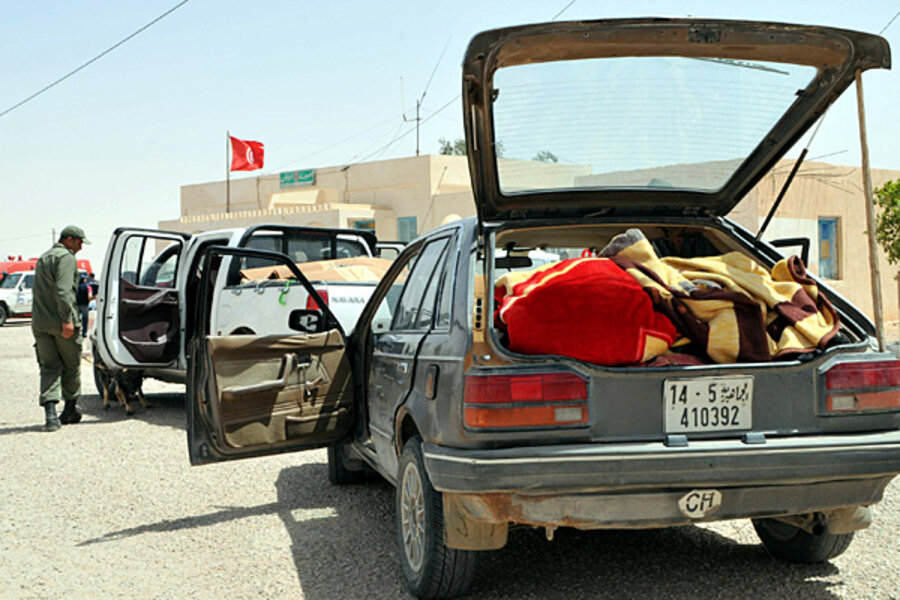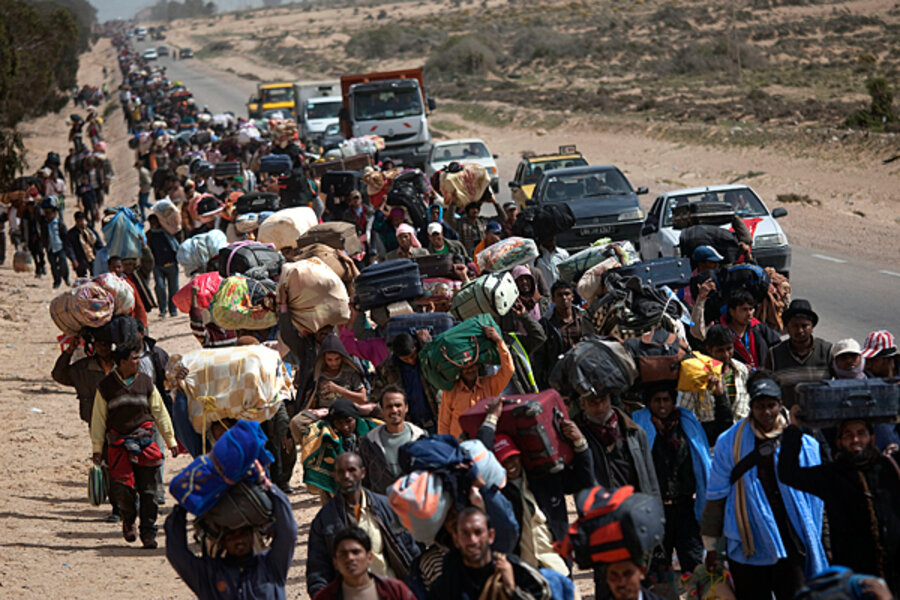686,000 Libya refugees flee to Egypt, Tunisia
| DehibaWazin Border, Libya
The Libyan revolution that began in February with hopes that Col. Muammar Qaddafi would quickly be toppled like the Tunisian and Egyptian autocrats before him, has turned into a protracted conflict with a grim human cost.
Hundreds of thousands have fled the violence. The exodus statistics compiled by the United Nations contain all categories of Libyan migrants. UN High Commissioner for Refugees Antonio Guterres on Tuesday called on Western nations to help, with the agency saying 686,422 had left Libya as of May 4, mostly for Egypt and Tunisia.
There have been columns of migrant workers from as far away as Ghana and Bangladesh, paid with oil money to build and maintain Libya's infrastructure (many of those leaving were robbed on their way out at police checkpoints). There are Turks and other big investors who left behind lucrative projects.
Many Libyan men, driving trucks piled high with household items, have crossed into southern Tunisia from this border outpost. They evacuated their families, often depositing them with relatives on the Tunisian side, and many crossed back to fight with the rebels.
Mounir Touchit and his family fit that category. They know the uncertainties of this war, and how fear and lack of information are driving the exodus. In late April, his family was warned that troops loyal to Colonel Qaddafi would recapture their town, Nalut, so they packed up and left.
"Nothing is there," says Mr. Touchit, sitting behind the wheel of an aging blue pickup truck carrying two women and three children. He says they were the last family to leave the town, 30 miles to the east.
Qaddafi's forces "are randomly bombing. That is why people are so afraid," says Touchit. In the back is a large sack of rice, a crate of tomatoes, and a satellite television dish.
At least Touchit made it to the border, where his family raised their fingers in a 'V' sign favored by the rebels, and said: "May God make us martyrs!"
Others were not as fortunate. Scores of families from deeper inside Libya have been thwarted in their attempts to leave, told by rebels that their route had become too dangerous. They had to return home as Qaddafi troops launched a counteroffensive and recaptured the border post – at least for a time.
"There is no acute malnutrition, and most of these Libyans have homes to go to," says Mike McDonagh, the head of the office of the Humanitarian Coordinator for Libya, during a visit to the border. "But they keep on coming," he says, noting that 18,500 Libyans had fled during one week in April alone.







